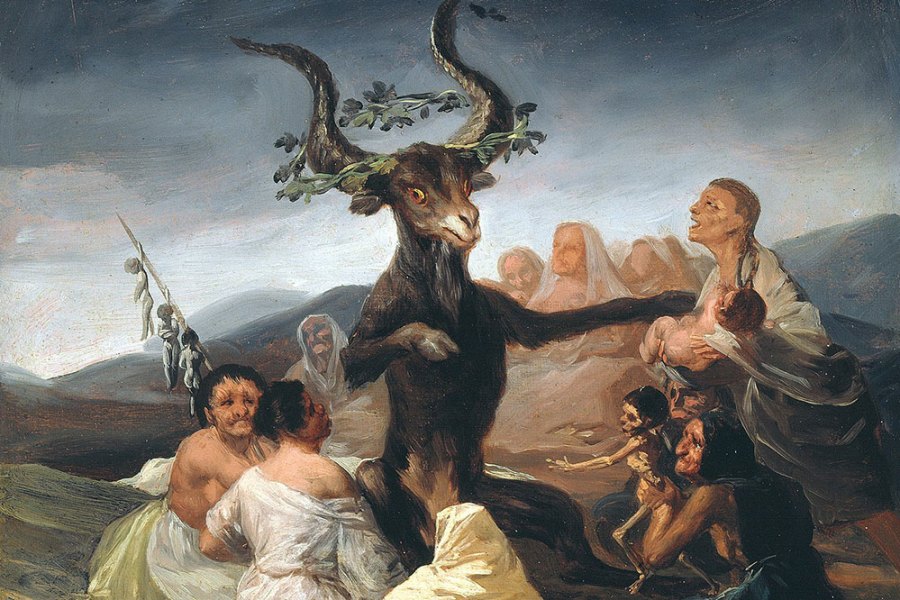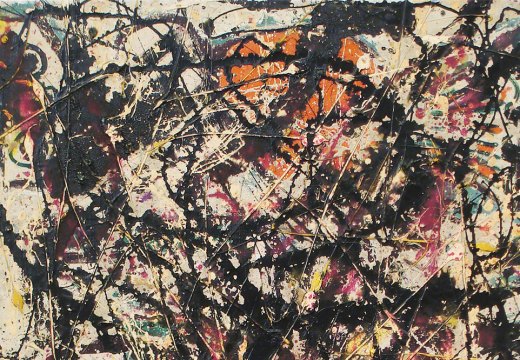 ‘Four things to see this week’ is sponsored by Bloomberg Connects, the free arts and culture app. Bloomberg Connects lets you access museums, galleries and cultural spaces around the world on demand. Download the app here to access digital guides and explore a variety of content.
‘Four things to see this week’ is sponsored by Bloomberg Connects, the free arts and culture app. Bloomberg Connects lets you access museums, galleries and cultural spaces around the world on demand. Download the app here to access digital guides and explore a variety of content.
Each week we bring you four of the most interesting objects from the world’s museums, galleries and art institutions, hand-picked to mark significant moments in the calendar.
The figure of the witch has been reborn in recent years. In 2021, off the back of cultural happenings including Jesse Jones’s bewitching film installation Tremble Tremble at the Venice Biennale in 2017 and the publication of Rebecca Tamás’s poetry collection Witch (2019), Penguin Books reissued the 2004 cult classic Caliban and the Witch by Silvia Federici. In this important book, the Marxist-feminist theorist charts the persecution of women by church, state and society in the late medieval and early modern period; spanning subjects such as the restriction of reproductive powers and femicide, its relevance continues today. With this revival came a wave of feminist reclaimings of the witch. Many a placard at pro-choice demonstrations now bears the slogan: ‘We are the granddaughters of the witches you couldn’t burn.’
On the anniversary of the Pendle witch trials, which saw 12 people accused of witchcraft in Lancashire in 1612, we take a look at four objects that encapsulate the power of the witch as a symbol of superstition and feminine power.

Witches’ Sabbath (1797–98), Francisco Goya. Museo Lázaro Galdiano, Madrid
1. Witches’ Sabbath (1797–98), Francisco Goya
Museo Lázaro Galdiano, Madrid
In Goya’s Witches’ Sabbath, a group of women is shown sitting around a goat-like figure that has been identified as Baphomet, a deity allegedly worshipped by the Knights Templar. Goya’s depictions of witches – in works such as this and in his Los Caprichos series – are said to be inspired by the accounts of the Basque Country witch hunts of 1609–11, and reveal his disdain for the Church’s reinstatement of the Inquisition and the subsequent rise in fanaticism and superstition. Click here to find out more.

Evening gown (Fall 2007), Alexander McQueen. Photo: © The Museum at FIT
2. Evening gown (Fall 2007), Alexander McQueen
The Museum at FIT, New York
This elegant evening gown was part of Alexander McQueen’s Fall 2007 collection, which he decided to dedicate to the themes of witchcraft, paganism and persecution after his mother discovered she could trace her ancestry back to a victim of the Salem witch trials (1692–93). The dress is adorned with beads made to look like golden tresses, referencing the pervasive presence of hair in folklore and fairy tales about witches. Click here to find out more on the Bloomberg Connects app.

Salade (c. 1430). Musée de l’Armée, Paris
2. Salade (c. 1430)
Musée de l’Armée, Paris
Not all women accused of witchcraft wore the pointy witch’s hat beloved of trick-or-treating children at Halloween. This salade (or sallet) is thought to have been worn by Joan of Arc. The patron saint of France was famously burned at the stake in 1431 for her ‘demonic’ and heretic traits of hearing voices and wearing men’s clothing. Click here to find out more.

Saul and the Witch of Endor (1526), Jacob Cornelisz van Oostsanen. Rijksmuseum, Amsterdam
4. Saul and the Witch of Endor (1526), Jacob Cornelisz van Oostsanen
Rijksmuseum, Amsterdam
This detailed scene by Jacob Cornelisz van Oostsanen depicts the fate of Saul, king of the Israelites, who is nevertheless merely a minor figure in the left middle-ground; the focus is instead upon an aged yet powerful witch. Accompanied by owls, satyrs and strange hybrid animals, she is shown drawing a circle around herself in chalk as she predicts the monarch’s defeat in battle. Click here to find out more.
Download now
![]() ‘Four things to see this week’ is sponsored by Bloomberg Connects, the free arts and culture app. Bloomberg Connects lets you access museums, galleries and cultural spaces around the world on demand. Download the app here to access digital guides and explore a variety of content or scan the QR code.
‘Four things to see this week’ is sponsored by Bloomberg Connects, the free arts and culture app. Bloomberg Connects lets you access museums, galleries and cultural spaces around the world on demand. Download the app here to access digital guides and explore a variety of content or scan the QR code.
Unlimited access from just $16 every 3 months
Subscribe to get unlimited and exclusive access to the top art stories, interviews and exhibition reviews.












![Masterpiece [Re]discovery 2022. Photo: Ben Fisher Photography, courtesy of Masterpiece London](http://www.apollo-magazine.com/wp-content/uploads/2022/07/MPL2022_4263.jpg)
It’s time for the government of London to return to its rightful home